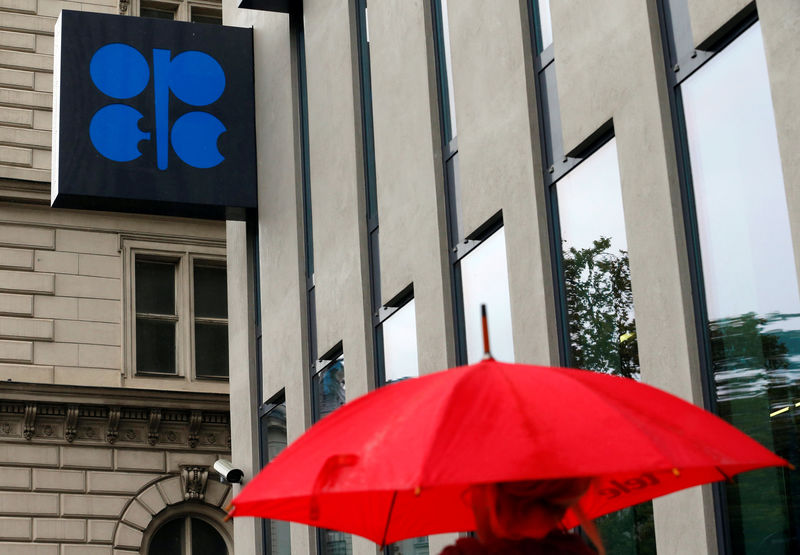By Alex Lawler
LONDON (Reuters) - OPEC reported a increase in its oil production in September to the highest in at least eight years and raised its forecast for 2017 non-OPEC supply growth, pointing to a larger surplus next year despite the group's deal to cut output.
The Organization of the Petroleum Exporting Countries pumped 33.39 million barrels per day (bpd) last month, according to figures OPEC collects from secondary sources, up 220,000 bpd from August, OPEC said in a monthly report on Wednesday.
The figures underline OPEC's challenge in seeking to restrain supplies for the first time since 2008 to curb a persistent supply glut and prop up prices. Oil is trading near $53 a barrel (LCOc1), less than half the price hit in mid-2014.
"Inventories stand near all-time highs worldwide," OPEC said in the report. "Although in recent weeks these high levels have been slightly drawn down."
To speed up a rebalancing of the market, OPEC agreed at a meeting in Algeria on Sept. 28 to cut supply to between 32.50 million bpd and 33.0 million bpd. The group hopes to finalize details, including how much each of the its 14 members can pump, at a meeting in November.
The report showed the supply boost in September mostly came from Libya and Nigeria, which are restoring output after disruptions, and from Iraq, which has questioned the accuracy of OPEC's secondary-source figures.
OPEC uses two sets of figures to monitor its output: figures provided by each country, and secondary sources which include industry media. The reason why two sets of figures are used is because of past disputes over how much countries were really pumping.
Iraq told OPEC it produced 4.775 million bpd in September, while the secondary sources put output at 4.455 million bpd. From Iraq's point of view, joining the OPEC supply cut deal from the higher figure would be more favorable.
Baghdad has taken issue with the gap between the two sets of figures. Iraqi Oil Minister Jabar Ali al-Luaibi called a separate briefing on the day of the Algeria meeting to complain about the gap.
That aside, OPEC's report is the latest to show output is hitting new peaks. The September figure is the highest since at least 2008, according to a Reuters review of past OPEC reports.
In the report, OPEC also raised its forecast of non-OPEC supply next year, saying output from outside the group would rise by 240,000 bpd, up 40,000 bpd from an earlier forecast due to a higher forecast for Russia.
With demand for OPEC crude in 2017 expected to average 32.59 million bpd, the report indicates there will now be an average surplus of 800,000 bpd if OPEC keeps output steady. Last month's report pointed to a 760,000 bpd surplus.

OPEC made no change to the global oil demand outlook, predicting demand growth of 1.15 million bpd in 2017.